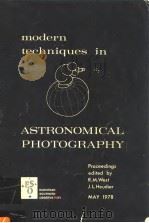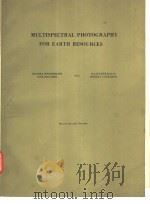《HANDBOOK FOR SCIENTIFIC PHOTOGRAPHY》
| 作者 | 编者 |
|---|---|
| 出版 | W. H. FREEMAN AND COMPANY |
| 参考页数 | 319 |
| 出版时间 | 1977(求助前请核对) 目录预览 |
| ISBN号 | 0716702851 — 求助条款 |
| PDF编号 | 812532418(仅供预览,未存储实际文件) |
| 求助格式 | 扫描PDF(若分多册发行,每次仅能受理1册) |
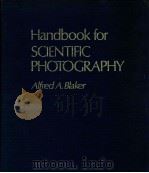
PART ⅠA REVIEW OF ESSENTIALS1
CHAPTER 1BASIC PHOTOGRAPHY3
Black-and-White Films3
Panchromatic Films4
Orthochromatic Films4
Non-Color-Sensitive Films4
The Basis of Correct Exposure4
Film Speed4
Functions of Diaphragm and Shutter5
Selection of Camera Settings6
The Reciprocity Law6
The Inverse-Square Law9
Exposure Determination9
Light Metering10
Flash Calculations10
Black-and-White Film Development12
Roll Films12
Sheet Films13
Time and Temperature13
Agitation14
Negative Quality14
Black-and-White Printing16
Variables in Printing16
Control Methods in Printing17
Points of Technique22
Print Quality22
Color Film Processing24
CHAPTER 2CHOICE OF EQUIPMENT25
Cameras25
Shutters26
Small Cameras27
Large Cameras31
Camera Supports34
PART ⅡGENERAL TECHNIQUES37
CHAPTER 3BACKGROUNDS39
Plain White Backgrounds39
Black Backgrounds43
Plain Grey Backgrounds44
Natural Backgrounds46
CHAPTER 4LIGHTING THREE-DIMENSIONAL SUBJECTS47
General Considerations47
Techniques52
Reflector-Diuser Lighting52
Direct Lighting54
Axial and Near-Axial Lighting54
Transmitted Light63
Dark-Field Lighting63
CHAPTER 5FILTERS IN BLACK-AND-WHITE PHOTOGRAPHY69
Types of Filters70
Color Filters70
Polarizing Filters73
Neutral-Density Filters77
Filter Factors79
CHAPTER 6SMALL-OBJECT PHOTOGRAPHY81
Closeup Flash Photography82
Magnification82
Lens Aperture83
Flash-to-Subject Distance86
Synchronization87
Color Correction88
Summary of Procedure88
Increasing the Magnification89
Photomacrography91
Obtaining Known Magnifications93
Principal Plane of Focus94
Preserving Magnification while Adjusting95
Depth of Field95
Working Distance97
Perspective97
Lighting99
Calculation of Exposure100
Flash Lighting102
Control of Movement and Vibration103
Indicators of Scale103
CHAPTER 7HIGH-RESOLUTION 35 mm PHOTOGRAPHY105
Camera Equipment106
Cameras106
Lenses106
Camera Handling108
Motion Control108
Exposure Accuracy109
Films and Processing109
Films109
Processing110
Printing110
Enlargers and Lenses110
Choice of Negative111
The Negative Carrier111
Focusing the Image112
Vibration112
CHAPTER 8STEREO PHOTOGRAPHY113
Basic Principles114
Base Separation114
Axis Alignment115
Techniques116
Casual Stereo116
Normal Stereo117
Closeup Stereo117
Photomacrographic Stereo117
Exaggerated Stereo119
Viewing Methods119
Optical Viewers119
Tube Viewing119
Direct Viewing120
CHAPTER 9PHOTOMICROGRAPHY122
Compound Microscopes123
Dissecting Microscopes123
Student Microscopes123
Research Microscopes124
Photo Microscopes124
Lenses124
Objectives125
Oculars126
Illuminators126
Cameras128
Films130
Panchromatic Films130
Orthochromatic Films130
High-Contrast Films132
Color Films132
Polaroid Land Films132
Special-Purpose Films134
Filters134
Color Filters136
Color-Conversion and Color-Correction Filters136
Didymium Glass Filter138
Neutral-Density Filters138
Exposure Determination140
Common Problems in Photomicrography142
Photomicrography with Simple Equipment145
Camera Lens On145
Camera Lens Off148
Kohler-System Photomicrography148
Numerical Aperture and Film Size150
Subsidiary Techniques154
Dark-Field Lighting154
Rheinberg Lighting156
Deliberately Uneven Lighting157
Polarization Technique157
Stereo Photomicrography158
Rolling Focus158
Low-Power Photomicrography160
CHAPTER 10REPAIRING FAULTS IN NEGATIVES AND PRINTS169
Types of Artifacts170
Dust and Lint170
Marks on Transparent Containers170
Condensation on Glassware171
Retouching,Spotting,and Treating Negatives and Prints171
Enhancing Backgrounds172
Removing Spots and Scratch Marks from Negatives and Prints176
CHAPTER 11SPECIAL CONSIDERATIONS IN COLOR PHOTOGRAPHY178
Films178
Color Correction178
Reciprocity Failure179
Quality179
Backgrounds180
Colors Usable180
Effects of Colored Backgrounds180
Lighting181
Filters181
Color Temperature181
Types of Filters182
Filter Factors183
PART ⅢSOLUTIONS TO PROBLEMS185
CHAPTER 12GENERAL PROBLEMS187
Control of Reflections187
The Law of Reflection187
Reflections on the Subject188
Museum-Case Photography189
Aquarium Photography190
Motion Control191
Camera Motion191
Subject Motion193
Spherical and Cylindrical Objects193
Hairs and Hairlike Processes194
Black Objects196
Monochromatic Colors198
CHAPTER 13SPECIFIC SUBJECT MATTER199
Laboratory Apparatus and Equipment199
Metal Objects199
Glass202
Electronics202
Art Objects and Anthropological Artifacts204
Coins204
Paintings and Other Flat Art206
Points and Other Tools206
Pottery and Other Dishware208
Sculpture208
Botanical Subjects210
Potted Plants210
Leaves and Plant Parts211
Herbarium Sheets213
Dish Cultures213
Colony Cultures214
Precipitation Bands214
Plaques216
Fossils216
Stony Fossils216
Amber Inclusions220
Geological Specimens220
Thin Sections220
Crystals221
Casts and Impressions222
Casts222
Impressions223
Replicas224
Insect Materials224
Eggs226
Larvae228
Pupae228
Beetles229
Transparent-Winged Insects232
Pinned Insects232
Moths and Butterflies234
Insect Galleries in Wood234
Silk Deposits237
Leaf and Needle Miners237
Tiny Active Adults237
Invisible Subjects241
People244
Portraits244
People as Types,or at Work247
Tubes248
Tube Slants248
Liquids in Tubes251
Precipitation Bands251
Objects in Tubes251
Zoological Subjects252
Anesthetized Specimens252
Bird Skins254
Bones and Teeth254
Living Animals256
Preserved Specimens260
Visceral Preparations260
PART ⅣRELATED TECHNIQUES265
CHAPTER 14COPYING267
Copyright267
Lighting268
Line Copy268
Continuous-Tone Copy270
Copying in Color270
Copying Color Transparencies to Black-and-White271
Slide Duplication273
Copying Tightly Bound Book Pages273
CHAPTER 15SLIDE MAKING275
Standards for Slide Originals275
Copying on Polaroid Land Slide Films276
Copying on 35 mm Color Films276
Copying for Slides with Black-and-White Negative Materials277
Line Copy277
Continuous-Tone Copy278
Direct Positive Black-and-White Slides278
Producing Line Slides in Color279
Use of Color Originals279
Negative Slides279
Negative Prints,Copied280
Double-Exposed Color/Black-and-White280
CHAPTER 16PRINTING OLD NEGATIVES282
Background282
Film Negatives283
Glass Negatives283
Conditions Affecting the Printability of Old Negatives284
Printing Methods286
PART ⅤFINAL PREPARATION FOR PUBLICATION AND VIEWING289
CHAPTER 17PREPARING PHOTOGRAPHS FOR PUBLICATION291
Publishers’Standards291
Paper Surface and Type292
To Mount,or Not292
Adhesives for Print Mounting292
Mounting of Prints for Plates293
Conventional Black-and-White Prints293
Conventional Color Prints294
Resin-Coated Papers294
Polaroid Land Prints294
Layout of Multiple Plates295
Labeling of Prints295
Indicators of Scale295
Lettering on Prints with Ink296
Application of Printed Labels296
Rub-on Lettering296
Use of Overlays in Labeling Photographs296
Protection of Plates after Make-up297
Presentation of Color Transparencies to Publishers297
Packaging for Presentation297
Use of Drawings or Photo Copies in Layout and Labeling297
Packing of Prints and Slides for Shipping298
CHAPTER 18MOUNTING PRINTS FOR WALL DISPLAY299
Mounting Moderate-Sized Prints on Boards299
Color of Mounting Board300
Edging of Prints300
Framing Moderate-Sized Prints301
Frames301
Matting Prints for Framing301
Bleed Mounting302
Group Mounts302
Mounting Very Large Prints302
BIBLIOGRAPHY303
INDEX309
1977《HANDBOOK FOR SCIENTIFIC PHOTOGRAPHY》由于是年代较久的资料都绝版了,几乎不可能购买到实物。如果大家为了学习确实需要,可向博主求助其电子版PDF文件(由 1977 W. H. FREEMAN AND COMPANY 出版的版本) 。对合法合规的求助,我会当即受理并将下载地址发送给你。
高度相关资料
-

- HANDBOOK OF SCIENTIFIC INSTRUMENTS AND APPARATUS 1963
- THE INSTITUTE OF PHYSICS AND THE PHYSICAL SOCIETH
-

- Starting photography
- 1976 Focal Press
-
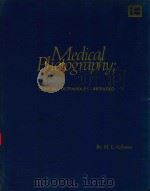
- MEDICAL PHOTOGRAPHY
- 1973 KODAK MEDICAL PUBLICATION
-

- ENGINEERING AND SCIENTIFIC HIGH-SPEED PHOTOGRAPHY
- 1962 THE MACMILLAN COMPANY
-

- PHOTOGRAPHY FOR SCIENTIFIC PUBLICATION A HANDBOOK
- 1965 W.H.FREEMAN AND COMPANY
-

- DICTIONARY OF PHOTOGRAPHY AND REFERENCE BOOK FOR AMATEUR AND PROFESSIONAL PHOTOGRAPHERS 18th ed.
- 1956 PHILOSOPHICAL LIBARY
-

- Ophthalmic photography
- 1982 Little
-
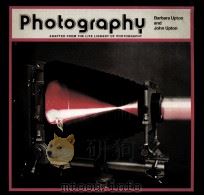
- PHOTOGRAPHY
- 1975 A DIVISION OF LITTLE BROWN AND COMPANY
-

- ADVANCED PHOTOGRAPHY
- 1972 THE FOCAL PRESS LONDON AND NEW YORK
-

- HAPPILY EVER AFTER? WOMEN'S FICTION IN POSTWAR BRITAIN 1945-60
- THE MACMILLAN PRESS
提示:百度云已更名为百度网盘(百度盘),天翼云盘、微盘下载地址……暂未提供。➥ PDF文字可复制化或转WORD


